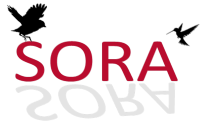The Rough-Legged Hawk in Western Washington
The Rough-legged Hawk in Western Washington
One of the most interesting features of the fall migration of hawks, through this part of the state, was the taking on October 20, 1917, of two Rough-legged Hawks (Archibuteo lagopus sancti-johannis). The first, a male bird, was collected by Mr. J. Hooper Bowles on the Tacoma tide flats. Seeing something on a cross-bar of a distant telegraph pole that looked very hawk-like, Mr. Bowles carefully approached for a closer view, keeping the pole between himself and the bird. In this way he obtained an excellent “close up”, and was, indeed: surprised to find it a Rough-leg.
The bird sat lengthwise of the cross-bar, on the sunny side of the pole, with wings half drooping. This odd attitude was observed by Mr. Bowles for a minute or more before collecting; when the hawk was brought to hand, he found the wings and tail soaking wet, which probably accounted for the strange position on the bar. A freshly eaten field mouse, found in its stomach may have been caught swimming across one of the many channels of the flats, and the hawk had probably been obliged to take a partial dip to secure its prey.
The other bird, also a male, was, curiously enough, taken by the present writer on the same day and only about a mile distant from where Mr. Bowles got his. The latter was taken in the morning, however, and mine in the afternoon. In coloration, the two are almost alike, and in very good plumage, though the one I collected was afflicted by a bad case of what we might call “scaly leg”, so common among chickens. Several big growths were found on each leg, one or two of which had been picked by the bird and were sore-looking and bloody.
My specimen was presented to Mr. D. E. Brown, of Seattle, who reported finding the body covered with sores when he skinned it. The stomach of this one also contained a field mouse.
Though the Rough-leg is somewhat of a wanderer, local bird men have few, if any, records of it for this vicinity, although east of the Cascades it is frequently met with.
E. A. Kitchin
Tacoma, Washington, February 1, 1918

